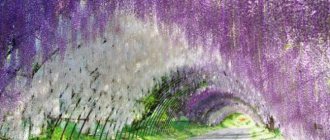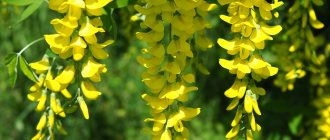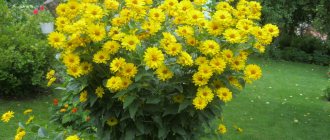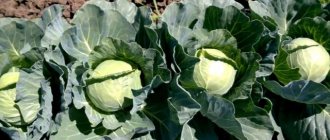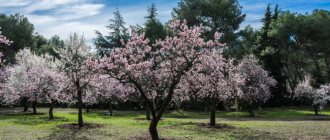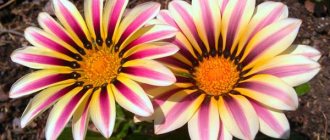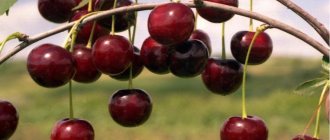In city squares, recreation parks, personal plots, and almost everywhere, you can see a beautiful tree or tall bush with beautiful yellow flowers and an unusual leaf shape. This is a caragana tree, which belongs to ornamental trees and shrubs. The Caragana genus belongs to the legume family, since the fruits of the tree are elongated boxes - pods. There are about 70 species, the habitat of which is extensive: Altai, Far East, Central and South Asia, Western Siberia.
Caragana shrub is loved by gardeners for its unpretentious nature, ease of propagation, ease of cultivation and beautiful appearance. In its genus it has a number of varieties that easily get along with each other and with other garden ornamental bushes. These include, for example, caragana tree-like Pendula, dwarf, weeping and others. In addition to its beautiful appearance and easy cultivation, caragana is an excellent honey plant. The components of the bush are used to treat skin diseases, diseases of the digestive tract, atherosclerosis, diathesis, heartburn, headaches and other ailments.
Description
Caragana or caragana yellow acacia is a shrub.
Depending on the species, the height of the plant varies from 2 to 7 meters. The surface of the trunk and branches is even, smooth, with gray-green bark. The length of caragana leaves reaches 10 cm, with 5 - 7 back-cone-shaped, rounded, pinnate leaves, up to 5 cm long. The shades of the leaves change depending on the time of year. So, in spring, young leaves are bright green, smooth, and closer to autumn they acquire a more saturated green or yellow tint. Like any honey plant, caragana flowers are very fragrant and fragrant, have a bright yellow color, collected in bunches of 3-5 pieces or grow singly. Flowering time is the second half of May, active flowering lasts no more than half the month. At the end of the flowering period, fruits are formed - beans, which are a narrow box of a gray-brown hue. One pod usually contains 6–8 grayish peas. In mid-late autumn, the fruit cracks and the peas fall to the ground.
The crown of the bush is spreading, reaching 4–5 meters in diameter. All species tolerate haircuts and crown adjustments well. With low pruning, growth appears quite quickly near the stump. In Russia, 17 species of caragana can be found in natural conditions.
Propagated by seeds, cuttings, shoots.
Caragana is unpretentious to the soil, but grows best on sandy, loose soil. Prefers open sunny places, but is also capable of active growth in the shade.
Most often in Russia and neighboring countries you can find Caragana tree-like Pendula or weeping caragana.
Caragana arborescens and its species have a wide range of medicinal and healing properties. It is valued not only as a decorative element in the garden, but also as a source of effective alternative medicine.
Caragana Pendula: botanical characteristics
Caragana tree-like Pendula, yellow acacia Pendula, or in Latin Caragana Arborescens Pendula is a compact deciduous shrub belonging to the Legume family. In essence, it is a plant spreading across the soil with thin branches. But it is usually grafted onto a standard, so that small trees with a weeping crown are obtained. The height of the weeping caragana tree depends on the height of the trunk. And the crown diameter reaches 2-3 meters. The variety grows quite quickly. During one growing season it grows 40 cm in height and 30 cm in crown diameter.
The natural habitat of this species is Siberia and Manchuria. Prefers sunny or slightly shaded areas with fertile sandy loam soils. Often found along roads. The lifespan of Caragana arborescens Pendula reaches 40 years.
Adult caraganas resemble green lacy umbrellas. The graceful outlines and amazing romantic-elegant appearance of the weeping caragana are due precisely to its branching, but this plant should be no less proud of its beautiful flowering.
The branches are long, thin, skeletal, twisting, picturesquely hanging vertically down to the ground. Covered with greenish-gray bark. The leaves are compound and pinnate in shape. The color of the foliage changes depending on the time of year: in the spring months, young pubescent leaves have a bright green tint, in the summer they become bare, green, and on the eve of frost they change color to yellowish.
The flowers of the tree-like weeping caragana are yellow, moth-type. They reach a small size, up to 2 cm. They can be single or collected in bunches of 2 – 5 flowers. The flowering period usually occurs at the end of May - beginning of June. Flowers begin to bloom after the plant is completely covered with foliage. The fruits of Pendula yellow acacia are beans that have a cylindrical shape. They ripen in July, crack, making a characteristic sound, curl and scatter seeds.
Types and varieties of Caragana
All types of caragana are similar in decorative characteristics. The two most popular species in gardening are caragana shrub and caragana tree.
In beekeeping, yellow caragana has excellent honey-producing qualities. During the period of active flowering, fragrant, healing honey is collected from this shrub.
Caragana shrubby
Caragana shrubby
Places of germination - meadows and foothills of the Caucasus, Western Siberia, Altai, Central and South Asia, the European part of Russia.
It has other names - steppe chiliga, dereza. Grows no more than 2 meters. The branches forming the crown grow densely. The leaves have a light green tint, the leaf shape is complex, obovate, pinnate, quartered, reminiscent of a four-leaf clover.
Caragana bush blooms in May. Flowers up to 3 cm long, bright golden yellow, grow singly or in bunches of 2–3 pieces. Seeds are beans, naked, smooth, cylindrical. The buds are covered with a long spine, which is essentially part of the base of the leaf stalk.
It grows quickly with young root shoots, which is why dense thickets are formed in places where caragana shrubs grow. This quality is used when planting bushes on loose areas of land.
The variety is fast-growing, frost-resistant, moderately demanding on watering, light-loving, and takes root on any soil. Easily adapts to urban conditions. The bush bears fruit from the age of 5 years.
Propagated by self-sowing (seeds), cuttings, layering, and dividing the bush.
In gardening, they are used for planting in parks and creating hedges. A good honey plant.
Caragana dwarf
Caragana dwarf
The height of the bush is no higher than 1.5 meters, the crown is very dense. A characteristic feature is slow growth. It is most often found in the steppes, on rocky mountain slopes and in the valleys of mountain rivers in the Altai Territory.
The bark is brownish-yellow. Blooms throughout the summer with bright yellow flowers. Dwarf caragana bears fruit well. A winter-hardy species, unpretentious to the soil, capable of germinating even in sandy soils.
Ussuri caragana
Ussuri caragana
Caragana Ussuri is found mainly in forests, steppes and urban areas of the Khabarovsk and Primorsky Territories, in Northeast China.
The height is no more than 1.5 meters, the branches are smooth, gray-brown, with thorns. Young shoots are thin, straight, ribbed. The leaf has a complex shape, composed of two paired obverse wedge-shaped leaves up to 2.5-3 mm long. The leaves are fleshy, shiny, dense, dark green on top and lighter below, with a thorn at the site of germination.
The color of the flower at the beginning of flowering is light yellow, at the end it is orange-red. The flowers are solitary, large, up to 2 – 2.5 cm in length. The flowering period lasts about 15 – 20 days. The fruits are pointed, long, flat, pods up to 3 - 3.5 cm long.
Reproduction occurs by self-sowing (seeds), cuttings, and dividing the bush.
Winter-hardy variety, often used to create hedges. Calmly tolerates cutting and adjusting the height of the bush.
Caragana arborescens Walker
Caragana arborescens Walker
The species is of hybrid origin from the Caragana varieties Lorberga and Pendula.
Description of Caragana arborescens Walker: a low bush, spread out along the ground, with an elegant, openwork, umbrella-shaped crown with flowing branches. The height of the plant depends on the height of the stem to which the graft is made. The crown diameter can reach 2 - 2.5 m.
Flowers up to 2 cm long, single or in a bunch of 2–5 pieces. Caragana arborescens Walker begins to bloom after the leaves have fully opened - in early June. The leaves are complex, narrow, up to 10 cm in length, consisting of 4-7 pairs of leaves of a soft green color.
Does not tolerate excessive watering and waterlogged soil. Caragana Walker is a light-loving plant, unpretentious to the quality and composition of the soil. In gardening it is used as single plantings.
Maned Caragana
Maned Caragana
It can often be seen along river banks, on rocky mountain slopes, in forests of Siberia, Kamchatka, and the Kuril Islands.
A low-growing shrub, the height of which varies from 1 to 3 meters. The branches are thick, long, curved, saber-shaped, covered with thorns, which are essentially cuttings of dead leaves.
The leaves are complex in shape and have 4–6 pairs of leaves. The color of the leaves is green and dark green. The leaves are terry on the underside. The flowers are solitary, up to 4–5 cm in length, color varies from pink to white. A distinctive feature is that the calyx of the flower has dense, thin hairs. Flowering continues in June – July. At the beginning of autumn, the maned caragana produces seeds in the form of spherical beans with a thorn, with which it reproduces.
It is unpretentious to the soil and can germinate even in the highlands.
In gardening it is used to create hedges in urban park landscaping.
Caragana arborescens Pendula
Caragana arborescens Pendula
A type of tree caragana Pendula or weeping caragana prostrate. Leaves are of normal shape. Flowering time is May, the flowers are yellow and germinate in bunches. The bush is unpretentious to the soil, tolerates dense planting, requires light, but also gives good growth in shady places. Drought-resistant, watering requirements are average, and in wetlands the shrub wilts.
The type of Caragana Pendula is obtained by grafting onto seedlings of the natural type Caragana tree in a standard of 2.5 - 3 m.
Caragana arborescens `Pendula`
To order
Description
General description of caragana Caragana pruinosa contains more than 70 species growing in Siberia, Central Asia and the Far East. Most of them are of the same type in appearance, similar in morphological characteristics, and therefore 2-3 types can be recommended for use for decorative purposes. Shrubs, less often small trees with pinnate leaves and stipules modified into awl-shaped appendages, sometimes spines. Flowers are butterfly, yellow; fruit - bean. Frost-resistant, undemanding to soil conditions, drought-resistant, tolerates urban conditions well. Excellent honey plants. Enrich the soil with nitrogen. They reproduce by seeds. Good results are obtained when sowing in spring in the ground after daily soaking in water. Decorative forms are propagated by grafting or green cuttings. In ornamental gardening they are used in single and group plantings, to create edges and hedges, protective strips, to strengthen slopes, as undergrowth in forest parks
Caragana tree, or yellow acacia, variety 'Pendula' (Pendula) is one of the most touching plants. As you might guess, this graceful little thing got its name thanks to the branches hanging down. Refined, light, delicate, this amazing caragana tree-like “Pendula” captivates with its “sad” appearance, the bright yellowish tint of non-massive greenery and the amazing elegance of the crown hanging to the ground. If you do not tie it up or twist it into a trunk, then this small shrub will spread along the ground like creeping junipers. But, perhaps, the most beautiful caragana pendula are shrubs grafted onto a trunk, which hang their seemingly weightless shoots from a high stem. This compact shrub does not lose its attractiveness even after the end of abundant flowering: in the fall it does not shed its green foliage for an amazingly long time, and in winter the intricate arches of the branches serve as a real decoration of the garden.
Life form: Deciduous tree or bush Crown: Weeping, medium. Growth rate: Fast. The annual growth is 40 cm in height and 30 cm in width. Crown height and diameter Durability: 40 years Flowers: Numerous, yellow, collected in bunches of 2-5 pieces. Leaves: Oval, consist of 9-11 leaflets, green in spring and summer, yellow in autumn, up to 15 cm long. Decorative: Caragana arborescens 'Pendula' is beautiful with its weeping crown and especially during flowering. Use: Single plantings, decorative groups, hedges. Relation to light: light-loving to moisture: drought-resistant to soil: not picky about temperature: frost-resistant Homeland: Western Siberia, Eastern Kazakhstan, Mongolia, Northern China.
Caragana arborescens 'Pendula' is an amazing plant, essentially a shrub with thin branches spread across the soil, which is most often grown on a trunk, which allows you to obtain bushes reminiscent of elegant trees with an elegant, weeping crown shape. Adult caraganas resemble green lacy umbrellas. The bizarre branches of this yellow acacia are long, twisting, with unusual bends, usually very thin, skeletal, hanging vertically down. The graceful outlines and amazing romantic-elegant appearance of the weeping caragana are due precisely to its branching, but this plant should be no less proud of its beautiful flowering. Yellow acacia blooms in May, covered with abundant waves of clustered yellow flowers, less often single yellow flowers. Caragana is also decorated with amazing cylindrical bean fruits, which, after ripening, curl with a bang, scattering seeds. With its almost graphic winter pattern, weeping caragana, with its amazing hanging branches, can only be rivaled in beauty by the decorative subspecies of common hazel.
Planting Caragana 'Pendula' Caragana 'Pendula' loves intense sunlight, but can also grow in shade, although in such conditions the shade of green changes to more muted and dark, and flowering is less abundant. Despite the fact that yellow acacia grows most actively on fresh sandy loam soils, this amazing shrub can settle in any soil, even heavy and compacted. Caragana arborescens is insensitive to the acidity and nutritional content of soils. The only thing this graceful beauty does not like is waterlogging of the soil and stagnation of moisture. The plant is absolutely winter-hardy; even young shoots that may freeze during snowless winters quickly recover. Caragana 'Pendula' is not sensitive to drought, air pollution or wind conditions, so it can be planted even near dusty city roads. Weeping caragana enriches the soil with nitrogen, thereby improving its composition and having a beneficial effect on neighboring plants. This is one of the best honey varieties.
Care of Caragana arborescens 'Pendula' Caragana arborescens 'Pendula' is one of the easiest shrubs to care for. It needs to be fed only in the first few years after planting in the spring, adding organic fertilizers to the soil. It does not need watering, even during drought. If you want to get a standard form, you should graft this variety onto a regular Caragana tree (height from 1 to 3 meters). The standard height of the standard form does not exceed one and a half meters, but the weeping aura can be made taller. Standard shrubs need protection for the winter, including wrapping the “legs,” but prostrate ones do not. In order to form a beautiful crown, a formative pruning should be carried out in the spring, which the plant tolerates quite well.
Planting caragana is carried out quite specifically. The plant is planted to a depth of about half a meter with preliminary drainage made from the largest possible fragments of stones or bricks. Instead of garden soil, the caragana is covered with sand and peat (3:1), adding a few handfuls of mineral fertilizer and not deepening the root collar more than 1 - 2 cm. Water the caragana abundantly immediately after planting, then do not water at all.
Caragana is propagated by seeds, which are formed after flowering, by cuttings and by grafting onto tall trunks.
Uses Caragana arborescens 'Pendula' Yellow Acacia is one of the most beautiful tapeworms. Its surroundings should be medium or low growing to emphasize the hanging crown that seems to be hovering above the rest of the plants. Weeping Karaguna can even be planted in a flower garden as a standard crop, while not only ground covers, but also herbaceous perennials with flowers of various sizes and colors can be used as neighbors. The beauty of the shrub is most emphasized by large-leaved and large-flowered species. It is better not to plant caragana pendula with other shrubs. Unrooted caragana can only grow against the backdrop of a lawn, away from other plants. Shrubs spread across the ground look very original on alpine hills, emphasizing the rocky soil with graceful branches. This weeping beauty is beautiful against the backdrop of trimmed hedges and spherical boxwood bushes. Thanks to its compact size, this caragana variety can be used even for the smallest gardens as a replacement for conventional tree species.
Medicinal properties
In folk medicine, all parts of Caragana arborescens are used to treat various diseases.
In alternative medicine, the use of caragana arborescens is used to treat:
- respiratory tract diseases (bronchitis, tonsillitis);
- skin diseases (allergies, diathesis, acne, boils);
- diseases of the digestive system (heartburn, stomach and duodenal ulcers);
- colds (flu, acute respiratory infections, stomatitis, laryngitis);
- joint diseases, arthritis, rheumatism, atherosclerosis;
- liver diseases;
- inflammation of the female organs (cervical erosion, metrorrhagia, leucorrhoea); hemorrhoids;
- diseases of the nervous system (headache, insomnia).
Tinctures and decoctions are prepared as medicinal preparations.
Yellow acacia honey
Beekeeping products - honey collected from yellow acacia, has an amber, light yellow color, a delicate aroma and a delicately sweet taste. A distinctive feature of yellow acacia honey is that it remains in a liquid state for a long time (about two years). It begins to crystallize later than all other types of honey.
Due to the early harvest, this honey is called “May”. Indicated for diseases such as:
- diabetes;
- avitaminosis;
- cataract, glaucoma, conjunctivitis;
- neuralgia, neuropsychological disorders, headache, insomnia;
- diseases of the gastrointestinal tract;
- gallbladder and kidney diseases;
- exhaustion, loss of strength.
Yellow acacia honey can have the following properties on the body:
- antiseptic;
- antimicrobial;
- anti-inflammatory;
- regulates blood sugar;
- sedatives;
- restorative.
Contraindications for the use of medicines based on Caragana
Any medicine, in addition to its beneficial qualities, has a number of side effects and contraindications.
When using infusions and decoctions based on Caragana, it is necessary to strictly observe precautions, not to exceed the permissible dose and time of administration, since during the flowering period the accumulation of a toxic substance - an alkaloid - occurs in all parts of the plant.
If safety measures are abused, consuming large quantities of seeds, decoction or infusion, it can lead to poisoning or even death.
In addition to the medicinal properties, Caragana is contraindicated for children, pregnant women, during breastfeeding, with individual intolerance, and with hypervitaminosis.
Caragana care
The shrub does not require special care conditions. Growing conditions for Caragana Pendula and other species are similar:
- moderate watering;
- systematic haircut.
To obtain a beautiful branched bush, it is necessary to trim the branches. Without proper care, the shrub can grow, greatly exposing the lower part of the trunk. To avoid this, gardeners advise systematically pruning the trunk, thereby the shrub will grow in width. Trimming the branches helps the bush acquire the necessary decorative shape.
Landing
Shrubs are propagated by seeds. For best results, the collected seeds are soaked in water for 6 hours. The best time for planting is early spring; in summer, sowing is done with freshly harvested seeds. The chance of getting seedlings when sowing in the fall is small. Reproduction by grafting is possible only on the main species of Caragana tree. The shrub is quite tolerant of dense planting.
Caragana tree, variety 'Pendula' (Pendula), photo, planting, cultivation, care, use
Caragana tree, or yellow acacia, variety 'Pendula' (Pendula) is one of the most touching plants.
Description
As you might guess, this graceful little thing got its name thanks to the branches hanging down.
Refined, light, delicate, this amazing caragana tree-like “Pendula” captivates with its “sad” appearance, the bright yellowish tint of non-massive greenery and the amazing elegance of the crown hanging to the ground.
If you do not tie it up or twist it into a trunk, then this small shrub will spread along the ground like creeping junipers.
But, perhaps, the most beautiful caragana pendula are shrubs grafted onto a trunk, which hang their seemingly weightless shoots from a high stem.
This compact shrub does not lose its attractiveness even after the end of abundant flowering: in the fall it does not shed its green foliage for an amazingly long time, and in winter the intricate arches of the branches serve as a real decoration of the garden. Let's take a closer look at the amazing weeping caragana and the peculiarities of its cultivation .
Characteristics:
Life form : Deciduous tree or bush
Crown: Weeping, medium.
Growth rate: Fast. The annual growth is 40 cm in height and 30 cm in width.
height and diameter 2 m.
Durability: 40 years
Flowers: Numerous, yellow, collected in bunches of 2-5 pieces.
Leaves: Oval, consist of 9-11 leaflets, green in spring and summer, yellow in autumn, up to 15 cm long.
Decorative : Caragana arborescens 'Pendula' is beautiful with a weeping crown and especially during flowering.
Use : Single plantings, decorative groups, hedges.
Attitude
to the light: photophilous
to moisture: drought-resistant
to soil: not picky
to temperature: frost-resistant
Homeland: Western Siberia, Eastern Kazakhstan, Mongolia, Northern China.
Growing conditions
Caragana arborescens 'Pendula' is an amazing plant, essentially a shrub with thin branches spread across the soil, which is most often grown on a trunk, which allows you to obtain bushes reminiscent of elegant trees with an elegant, weeping crown shape.
Adult caraganas resemble green lacy umbrellas. The bizarre branches of this yellow acacia are long, twisting, with unusual bends, usually very thin, skeletal, hanging vertically down.
The graceful outlines and amazing romantic-elegant appearance of the weeping caragana are due precisely to its branching, but this plant should be no less proud of its beautiful flowering. Yellow acacia blooms in May, covered with abundant waves of clustered yellow flowers, less often single yellow flowers.
Caragana is also decorated with amazing cylindrical bean fruits, which, after ripening, curl with a bang, scattering seeds. With its almost graphic winter pattern, weeping caragana, with its amazing hanging branches, can only be rivaled in beauty by the decorative subspecies of common hazel.
Planting Caragana 'Pendula'
Caragana 'Pendula' loves intense sunlight, but can also grow in shade, although in such conditions the shade of green changes to more muted and dark, and flowering is less abundant.
Despite the fact that yellow acacia grows most actively on fresh sandy loam soils, this amazing shrub can settle in any soil, even heavy and compacted. Caragana arborescens is insensitive to the acidity and nutritional content of soils.
The only thing this graceful beauty does not like is waterlogging of the soil and stagnation of moisture. The plant is absolutely winter-hardy; even young shoots that may freeze during snowless winters quickly recover.
Caragana 'Pendula' is not sensitive to drought, air pollution or wind conditions, so it can be planted even near dusty city roads. Weeping caragana enriches the soil with nitrogen, thereby improving its composition and having a beneficial effect on neighboring plants. This is one of the best honey varieties.
Caragana tree 'Pendula' - care
Caragana arborescens 'Pendula' is one of the easiest shrubs to care for. It needs to be fed only in the first few years after planting in the spring, adding organic fertilizers to the soil. It does not need watering, even during drought.
If you want to get a standard form, you should graft this variety onto a regular Caragana tree (height from 1 to 3 meters). The standard height of the standard form does not exceed one and a half meters, but the weeping aura can be made taller.
Standard shrubs need protection for the winter, including wrapping the “legs,” but prostrate ones do not. In order to form a beautiful crown, a formative pruning should be carried out in the spring, which the plant tolerates quite well.
Planting caragana is carried out quite specifically. The plant is planted to a depth of about half a meter with preliminary drainage made from the largest possible fragments of stones or bricks.
Instead of garden soil, the caragana is covered with sand and peat (3:1), adding a few handfuls of mineral fertilizer and not deepening the root collar more than 1 - 2 cm. Water the caragana abundantly immediately after planting, then do not water at all.
Caragana is propagated by seeds, which are formed after flowering, by cuttings and by grafting onto tall trunks.
Caragana arborescens 'Pendula' - use
Yellow locust is one of the most beautiful tapeworms. Its surroundings should be medium or low growing to emphasize the hanging crown that seems to be hovering above the rest of the plants.
Weeping Karaguna can even be planted in a flower garden as a standard crop, while not only ground covers, but also herbaceous perennials with flowers of various sizes and colors can be used as neighbors. The beauty of the shrub is most emphasized by large-leaved and large-flowered species.
It is better not to plant caragana pendula with other shrubs. Unrooted caragana can only grow against the backdrop of a lawn, away from other plants. Shrubs spread across the ground look very original on alpine hills, emphasizing the rocky soil with graceful branches.
This weeping beauty is beautiful against the backdrop of trimmed hedges and spherical boxwood bushes. Thanks to its compact size, this caragana variety can be used even for the smallest gardens as a replacement for conventional tree species.
Please note this:
| Creating a garden | All about garden plants | We are building a house |
| All the flowers are here | Creating a lawn | We are building a bathhouse |
| Reservoir design | What would happen without a rock garden... | All about roses |
Popular:
- Is it possible to grow magnolia in the north: myth or reality, description of species, growing conditions, care
- Weigela blooming, varieties, photos, description, planting, care, in garden design
- Cotoneaster horizontal, photo, description, planting, growing, care, application
- Spiraea VanGutta, photo, description, planting, growing, care, application
- Ginnala maple, description, photo, growing conditions, care
Next:
- When and how to prune bushes correctly?
- How to properly trim bushes and trees - topiary. Methods and materials
- Tatarian honeysuckle, types, description, photo, growing conditions, care, application, diseases and pests
- Is it possible to grow magnolia in the north: myth or reality, description of species, growing conditions, care
- Spring pruning of roses and shrubs, terms and rules
Previous:
- How to properly propagate ornamental shrubs using woody cuttings.
- Thunberg's barberry "Rose Glow" (Berberis thunbergii "Rose Glow") photo, planting, growing, care, application
- Barberry Thunberg 'Pink Queen' photo, planting, growing, care, application
- Barberry Thunberg “Electra” photo, planting, growing, care, application
- Barberry thunberga Red Pillar, photo, planting, growing, care, application
Use in garden design
Its unpretentious nature, dense foliage, short stature, and at the same time fast-growing bush are very valuable in garden design. Its main use is in creating hedges.
The use of compositions from several representatives of this genus - caragana tree, Pendula, Ussuri and others, allows you to create amazing living green edges, reinforcements for slopes, dense protective strips. The plant is used to preserve crumbling slopes.
The amazing and beautiful caragana shrub can not only delight with its appearance and variety of forms, but also allows you to obtain medicines for the treatment of various ailments. Beautiful fragrant flowers, unusually shaped leaves, intricately shaped branches - all this can be seen in the nearest forest belt, city park or arboretum.


